Papers by Ariane Lambert-Mogiliansky
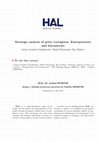
Social Science Research Network, Nov 1, 2005
This paper develops a game-theoretic model of "petty corruption"by government o¢ cials. Such corr... more This paper develops a game-theoretic model of "petty corruption"by government o¢ cials. Such corruption is widespread, especially (but not only) in developing and transition economies. The model goes beyond the previously published studies in the way it describes the structure of bureaucratic "tracks," and the information among the participants. Entrepreneurs apply, in sequence, to a "track" of two or more bureaucrats in a prescribed order for approval of their projects. Our …rst result establishes that in a one-shot situation no project ever gets approved. This result leads us to consider a repeated interaction setting. In that context we characterize in more detail the trigger-strategy equilibria that minimize the social loss due to the system of bribes, and those that maximize the expected total bribe income of the bureaucrats. The results are used to shed some light on two much advocated anti-corruption policies: the single window policy and rotation of bureaucrats. 1 "Corruption is found to be one of the most damaging consequences of poor governance characterized by lack of both transparency and accountability. Corruption lowers investment and hinders economic growth and human development, by limiting access to basic social services as well as increasing the cost of their delivery. It also increases poverty, subverts the …nancial system, and undermines the legitimacy of the state. Thus, corruption is anti-poor, anti-development, anti-growth, anti-investment, and inequitable. The cost of corruption to a nation is very high".
A companion volume to the International Handbook on the Economics of Corruption published in 2006... more A companion volume to the International Handbook on the Economics of Corruption published in 2006, the specially commissioned papers in Volume Two present some of the best policy-oriented research in the field. They stress the institutional roots of corruption and include new research on topics ranging from corruption in regulation and procurement to vote buying and private firm payoffs.
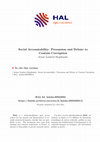
In this paper we investigate the properties of simple rules for reappointment aimed at holding a ... more In this paper we investigate the properties of simple rules for reappointment aimed at holding a public official accountable and monitor his activity. The public official allocates budget resources to various activities which results in the delivery of public services to citizens. He has discretion over the use of resource so he can divert some of them for private ends. Because of a liability constraint, zero diversion can never be secured in all states. The optimal reappointment mechanism under complete information is shown to exhibit some leniency thus departing from the zero tolerance principle. Under asymmetric information (about the state), a rule with random verification in a pre-announced subset is shown to be optimal in a class of common rules. Surprisingly, those common rules make little use of hard information about service delivery when available. Similarly, PO's claim about his record is of no value to improve the performance of the examined rules. In contrast requesting that the PO defends his records publicly can be very useful if the service users can refute false claims with cheap talk complaints: the first best complete information outcome can be approached in the absence of any observation by the manager of the accountability mechanism.
RePEc: Research Papers in Economics, 2005
ABSTRACT
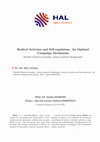
Journal of Environmental Economics and Management, Mar 1, 2023
We study the problem faced by activists who want to maximize …rms'compliance with high environmen... more We study the problem faced by activists who want to maximize …rms'compliance with high environmental standards. Our focus is on radical activism which relies on non-violent civil disobedience. The threat of disruptive actions is used to force …rms to concede i.e., to engage in self-regulation. We adopt a mechanism design approach to characterize an optimal campaign. The analysis informs that the least vulnerable and most polluting …rms should be targeted with disruptive actions while the others are granted a guarantee not to be targeted in exchange for a concession. This characterization allows studying the determinants of the activist's strength and how it is a¤ected by repression, a central feature in civil disobedience. We …nd that an optimal campaign is relatively resilient to repression and that it creates incentives to free ride in prosecution for individual …rms. Next, we consider heterogeneity in …rms'abatement cost to …nd that an optimal campaign optimizes the allocation of abatment e¤orts and creates incentives for innovation. We discuss some other welfare properties of optimal campaign.
Symmetry, Jan 21, 2021
This article is an open access article distributed under the terms and conditions of the Creative... more This article is an open access article distributed under the terms and conditions of the Creative Commons Attribution (CC BY
RePEc: Research Papers in Economics, 2012
RePEc: Research Papers in Economics, Feb 1, 2009
The Type Indeterminacy model is a theoretical framework that formalizes the constructive preferen... more The Type Indeterminacy model is a theoretical framework that formalizes the constructive preference perspective suggested by Kahneman and Tversky. In this paper we explore an extention of the TI-model from simple to strategic decision-making. A 2X2 game is investigated. We first show that in a one-shot simultaneaous move setting the TI-model is equivalent to a standard incomplete information model. We then let the game be preceded by a cheap-talk promise exchange game. We show in an example that in the TI-model the promise stage can have impact on next following behavior when the standard classical model predicts no impact whatsoever. The TI approach differs from other behavioral approaches in identifying the source of the effect of cheap-talk promises in the intrinsic indeterminacy of the players' type.

RePEc: Research Papers in Economics, Jul 1, 2007
This paper develops a game-theoretic model of "petty corruption" by government official... more This paper develops a game-theoretic model of "petty corruption" by government officials. Such corruption is widespread, especially (but not only) in developing and transition economies. The model goes beyond the previously published studies in the way it describes the structure of bureaucratic "tracks," and the information among the participants. Entrepreneurs apply, in sequence, to a "track" of two or more bureaucrats in a prescribed order for approval of their projects. Our first result establishes that in a one-shot situation no project ever gets approved. This result leads us to consider a repeated interaction setting. In that context we characterize in more detail the trigger-strategy equilibria that minimize the social loss due to the system of bribes, and those that maximize the expected total bribe income of the bureaucrats. The results are used to shed some light on two much advocated anti-corruption policies: the single window policy and rotation of bureaucrats.
RePEc: Research Papers in Economics, Dec 1, 2008
The paper explores a game-theoretic model of petty corruption involving a sequence of entrepreneu... more The paper explores a game-theoretic model of petty corruption involving a sequence of entrepreneurs and a track of bureaucrats. Each entrepreneur's project is approved if and only if it is cleared by each bureaucrat. The project value is stochastic; its value is observed only by the entrepreneur, but its distribution is common knowledge. Each bureaucrat clears the project only if a bribe is paid. The bribe for qualified projects ("extortion") and unqualified projects ("capture") may differ. We identify the nature and welfare implications of different types of equilibria under appropriate technical assumptions on the structure of the game.
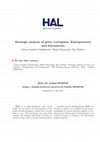
RePEc: Research Papers in Economics, Nov 1, 2005
This paper develops a game-theoretic model of "petty corruption"by government o¢ cials. Such corr... more This paper develops a game-theoretic model of "petty corruption"by government o¢ cials. Such corruption is widespread, especially (but not only) in developing and transition economies. The model goes beyond the previously published studies in the way it describes the structure of bureaucratic "tracks," and the information among the participants. Entrepreneurs apply, in sequence, to a "track" of two or more bureaucrats in a prescribed order for approval of their projects. Our …rst result establishes that in a one-shot situation no project ever gets approved. This result leads us to consider a repeated interaction setting. In that context we characterize in more detail the trigger-strategy equilibria that minimize the social loss due to the system of bribes, and those that maximize the expected total bribe income of the bureaucrats. The results are used to shed some light on two much advocated anti-corruption policies: the single window policy and rotation of bureaucrats. 1 "Corruption is found to be one of the most damaging consequences of poor governance characterized by lack of both transparency and accountability. Corruption lowers investment and hinders economic growth and human development, by limiting access to basic social services as well as increasing the cost of their delivery. It also increases poverty, subverts the …nancial system, and undermines the legitimacy of the state. Thus, corruption is anti-poor, anti-development, anti-growth, anti-investment, and inequitable. The cost of corruption to a nation is very high".
RePEc: Research Papers in Economics, Jul 1, 2007
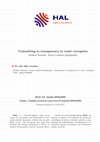
RePEc: Research Papers in Economics, Jun 1, 2010
This paper examines firms' incentives to commit to a transparent behavior (that precludes bribery... more This paper examines firms' incentives to commit to a transparent behavior (that precludes bribery) in a competitive procedure modeled as an asymmetric information beauty contest managed by a corrupt agent. In his evaluation of firms' offers for a public contract the agent has some discretion to favor a firm in exchange of a bribe. It is shown that a conditional commitment mechanism can eliminate corruption when it is pure extortion. Otherwise, when corruption can affect allocation and the market's profitability is small, a low quality firm may prefer not to commit. In that situation, the existence of a separating equilibrium in which only the high quality firms commit is guaranteed when commitment decisions are kept secret, but requires some conditions on firms' beliefs when commitment decisions are publicly announced. Generally, a unilateral commitment mechanism that rewards commitment with a bonus performs less well. A mechanism combining both conditional commitment and a bonus has the potential to fully eliminate corruption.
RePEc: Research Papers in Economics, 2017
In this paper we investigate the potential for persuasion linked to the quantum indeterminacy of ... more In this paper we investigate the potential for persuasion linked to the quantum indeterminacy of beliefs. We first formulate the persuasion problem in the context of quantum-like beliefs. We provide an economic example of belief manipulation that illustrates the setting. We next establish a theoretical result showing that in the absence of constraints on measurements, any state can be obtained as the result of a suitable sequence of measurements. We finally discuss the practical significance of our result in the context of persuasion.
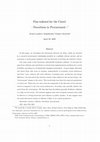
Review of Industrial Organization, Sep 1, 2009
In this paper, we investigate the interaction between two firms, which are involved in a repeated... more In this paper, we investigate the interaction between two firms, which are involved in a repeated procurement relationship modeled as a multiple criteria auction, and an auctioneer (a government employee) who has discretion in devising the selection criteria. Our main result is that favoritism substantially facilitates collusion. It increases the gains from collusion and contributes to solving basic implementation problems for a cartel of bidders operating in a stochastically changing environment. A most simple allocation rule where firms take turns in winning, independently of stochastic social preferences and firms' costs, achieves full cartel efficiency (including price, production and design efficiency). In each period the selection criteria is fine-tailored to the in-turn winner: the "environment" adapts to the cartel. This result holds true when the expected punishment is a fixed cost. When the cost varies with the magnitude of the distortion of the selection criteria (compared to the true social preferences), favoritism only partially shelters the cartel from the environment. We thus find that favoritism generally facilitates collusion at a high cost for society. Our analysis suggests some anti-corruption measures that could be effective in curbing favoritism and collusion in public markets. It also suggests that the much-advocated rotation of officials is likely to be counter-productive.
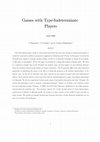
Springer eBooks, 2015
The Type Indeterminacy model is a theoretical framework that uses some elements of quantum formal... more The Type Indeterminacy model is a theoretical framework that uses some elements of quantum formalism to model the constructive preference perspective suggested by Kahneman and Tversky. In this paper we extend the TI-model from simple to strategic decision-making. In Part I we introduce TI-games by means of an example. A 2X2 game is investigated. We let the game be preceded by a cheap-talk promise exchange game. We show in a numerical example that in the TI-model the promise stage can have impact on next following behavior when the standard classical model predicts no impact whatsoever. The TI approach differs from other behavioral approaches in identifying the source of the effect of cheap-talk promises in the intrinsic indeterminacy of the players' type. In Part II, we formulate some basic concepts for the analysis of games with type indeterminate players. We develop the theory in close connection with the standard approach to game of incomplete information à la Harsanyi. We show an equivalence between static games of incomplete information and static TI-games. We extend this equivalence result to dynamic commuting TI-games. Finally, we develop a new solution concept for non-commuting dynamic TI-games. It differs from the Perfect Bayesian equilibrium by one single property characterizing the updating rule. This property captures the novelty brought about by Type Indeterminacy namely that in addition to affecting payoffs, the action of a player impacts on the profile of types and thus on future actions. We provide an example showing that strategies that form a Perfect Bayesian equilibrium are not part of any Perfect TI-equilibrium.
Springer eBooks, 2011
ABSTRACT
International Journal of Economic Theory, Jun 1, 2008
The paper explores a game-theoretic model of petty corruption involving a sequence of entrepreneu... more The paper explores a game-theoretic model of petty corruption involving a sequence of entrepreneurs and a track of bureaucrats. Each entrepreneur's project is approved if and only if it is cleared by each bureaucrat. The project value is stochastic; its value is observed only by the entrepreneur, but its distribution is common knowledge. Each bureaucrat clears the project only if a bribe is paid. The bribe for qualified projects ("extortion") and unqualified projects ("capture") may differ. We identify the nature and welfare implications of different types of equilibria under appropriate technical assumptions on the structure of the game.
Journal of Development Economics, Sep 1, 2015
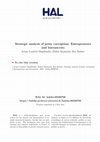
Journal of Development Economics, Jul 1, 2007
This paper develops a game-theoretic model of "petty corruption"by government o¢ cials. Such corr... more This paper develops a game-theoretic model of "petty corruption"by government o¢ cials. Such corruption is widespread, especially (but not only) in developing and transition economies. The model goes beyond the previously published studies in the way it describes the structure of bureaucratic "tracks," and the information among the participants. Entrepreneurs apply, in sequence, to a "track" of two or more bureaucrats in a prescribed order for approval of their projects. Our …rst result establishes that in a one-shot situation no project ever gets approved. This result leads us to consider a repeated interaction setting. In that context we characterize in more detail the trigger-strategy equilibria that minimize the social loss due to the system of bribes, and those that maximize the expected total bribe income of the bureaucrats. The results are used to shed some light on two much advocated anti-corruption policies: the single window policy and rotation of bureaucrats. 1 "Corruption is found to be one of the most damaging consequences of poor governance characterized by lack of both transparency and accountability. Corruption lowers investment and hinders economic growth and human development, by limiting access to basic social services as well as increasing the cost of their delivery. It also increases poverty, subverts the …nancial system, and undermines the legitimacy of the state. Thus, corruption is anti-poor, anti-development, anti-growth, anti-investment, and inequitable. The cost of corruption to a nation is very high".

Uploads
Papers by Ariane Lambert-Mogiliansky